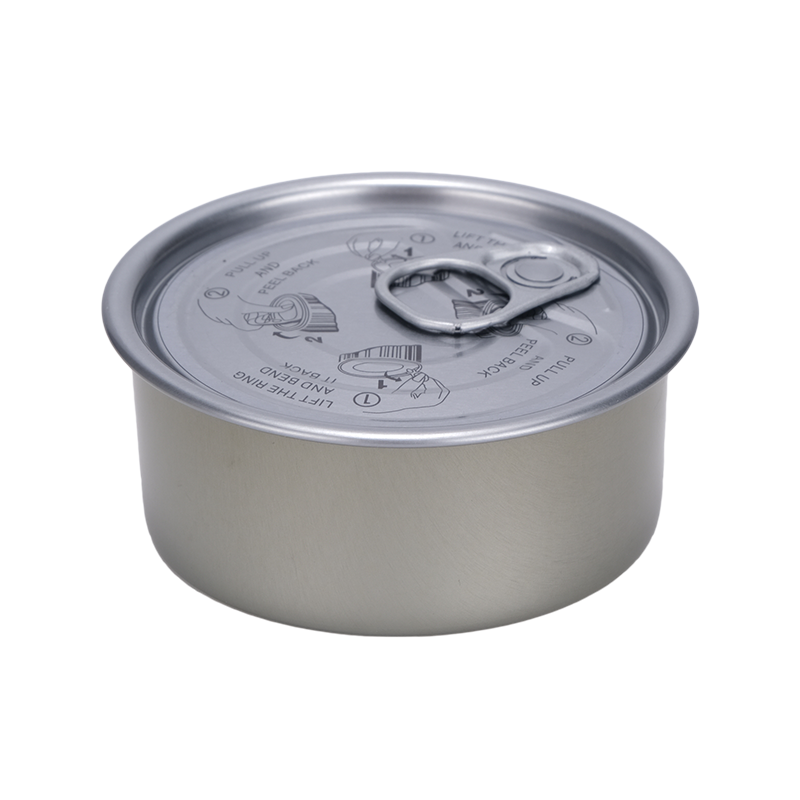Email: [email protected]
Pet food in boxes are constructed from a variety of materials designed to ensure safety, durability, and functionality. Here are the common materials used in their construction:
Primary Materials:
Tinplate:
Composition: Tinplate is steel that has been coated with a thin layer of tin. The steel provides strength and durability, while the tin layer prevents rust and corrosion.
Advantages: Tinplate is commonly used for its corrosion resistance, strength, and ability to protect the contents from light, air, and moisture. It is also relatively easy to form and shape into various designs.
Aluminum:
Composition: Aluminum is a lightweight metal that is naturally resistant to corrosion.
Advantages: Aluminum is easy to mold, has excellent corrosion resistance, and is lightweight, making it suitable for creating portable and durable tin boxes.
Coatings and Linings:
Food-Grade Epoxy or Polymer Coatings:
Purpose: These coatings are applied to the interior of the tin box to prevent direct contact between the metal and the pet food, reducing the risk of chemical interactions or contamination.
Advantages: They ensure food safety by providing a non-reactive barrier and can also help in extending the shelf life of the stored food by preventing corrosion.

BPA-Free Linings:
Purpose: BPA-free linings are used to avoid the potential health risks associated with bisphenol A (BPA), a chemical previously common in can linings.
Advantages: They ensure that the pet food remains free from harmful chemicals that could leach into the food from the container.
Seals and Gaskets:
Silicone Seals:
Purpose: Silicone seals are used to create airtight and watertight closures, ensuring the freshness of the pet food by preventing exposure to air and moisture.
Advantages: Silicone is flexible, durable, and food-safe, making it an ideal material for creating effective seals.
Remember when you look for these food cans it best to look for a food grade tin can supplier that provides high-quality and cost-effective pricing to make your buying journey amazing.
Rubber Gaskets:
Purpose: Rubber gaskets are another option for providing airtight seals.
Advantages: They are durable, provide a good seal, and are resistant to wear and tear.
Exterior Finishes:
Powder Coating:
Purpose: Powder coating is applied to the exterior of the tin box for enhanced durability and aesthetics.
Advantages: It provides a tough, protective finish that is resistant to scratching, chipping, and fading. Powder coatings are available in various colors and textures.
Printed Designs:
Purpose: Printed designs or labels can be applied to the exterior for branding, instructions, or decorative purposes.
Advantages: Modern printing techniques allow for high-quality, durable designs that can withstand handling and exposure to the elements.
Handles and Accessories:
Metal Handles:
Purpose: Some tin boxes include metal handles for easy carrying.
Advantages: Metal handles are strong and durable, providing a sturdy grip for transporting the tin box.
Plastic or Rubber Accessories:
Purpose: Accessories like scoops or measuring cups might be made from plastic or rubber.
Advantages: These materials are lightweight, easy to clean, and can be designed to fit neatly inside the tin box.
Pet food tin boxes are constructed using a combination of durable, food-safe materials to ensure they provide effective storage solutions while maintaining the quality and safety of the pet food. The use of tinplate or aluminum, combined with appropriate interior coatings and airtight seals, makes these containers reliable and practical for everyday use.
When manufacturing pet food tin boxes, selecting high-quality tinplate is essential to ensure durability, corrosion resistance, and food safety. Working with a trusted Tinplate Food Can Manufacturer guarantees that the cans meet industry standards for safe and long-term food storage.
Related recommendations